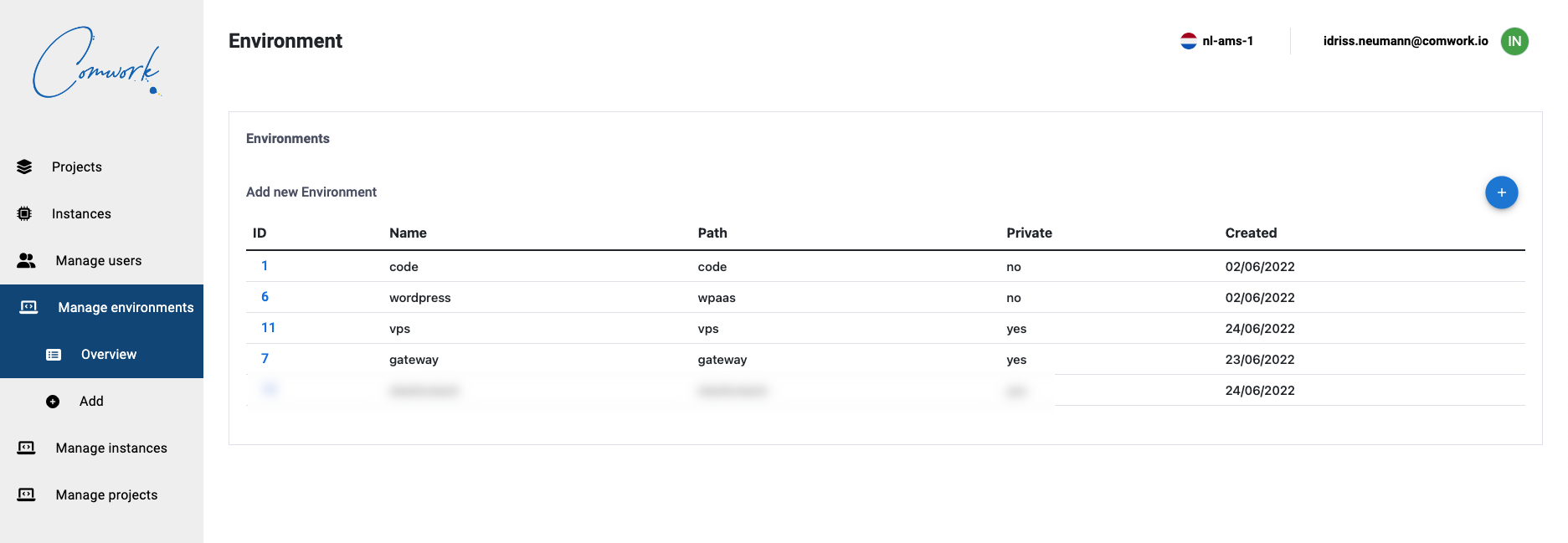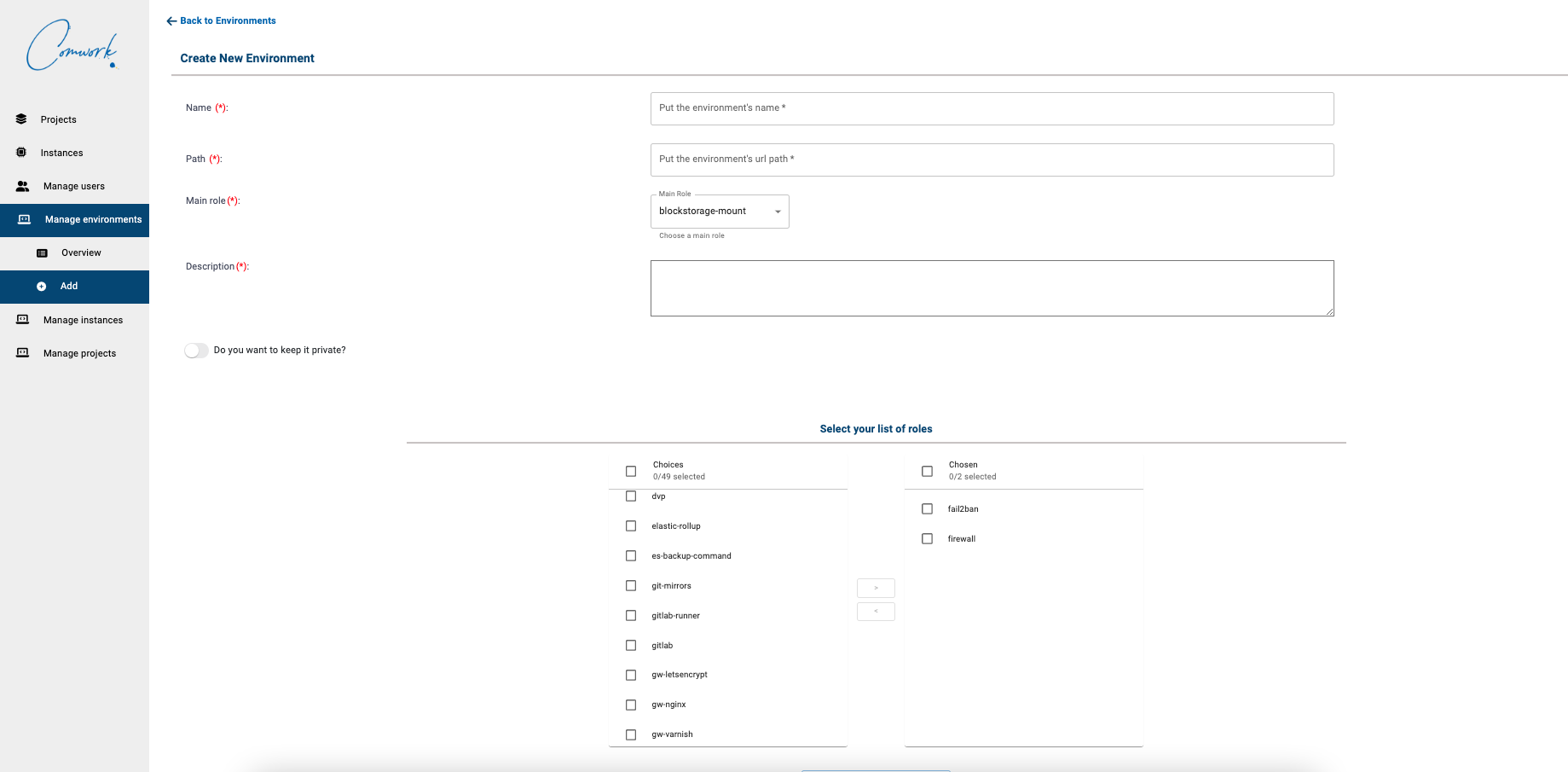Manage environments
Translations
This tutorial is also available in the following languages:
How to manage environments
You can manage the environments which are a set of ansible roles and templates.

Keeping environment private will make the environment not accessible for non-admin users.

Beware of the roles order:
common,sudo,sshmust be always theregitlab-runnermust be the last one
If the playbook-xxxx.yml isn't in the right order, then you have to re-order all the roles one by one using the screen above.
You'll probably have to complete the jinja template comwork-cloud-api/ansible/env/instance_name.yml.j2 to add the required values for your environment.
If you need to let instructions about value to change in this file, you also have a documentation template comwork-cloud-api/ansible/env/instance_name.md.j2 to complete.
You'll also have to complete the package images inventory /Users/ineumann/comwork-cloud-api/cloud_environments.yml to add your environment and images (packer):
- environment: YOUR_ENVIRONMENT
extra_subdomains: []
images:
- fr-par-1: 874c09fa-15e6-45eb-af3a-013f3318d220
- fr-par-2: c0180f91-1ea8-4ee0-8df7-47183b8c36fc
- nl-ams-1: 7afea3b7-d6cc-46b1-a1d9-8e60eba2c982
- pl-waw-1: 296d036c-c0cd-478e-aad1-551d5ab95ede
You can re-use the code or portainer references in most of the cases.
Then, if you need to see the ansible errors for the first time:
- Create a simple VM instance (on Almalinux, last version available)
- Git clone of the gitlab repo of your project
- Then try your playbook manually and fix all the errors you'll see in the role or jinja template:
dnf update -y
dnf install -y git epel-release
dnf install -y ansible
git clone https://gitlab.comwork.io/comwork/infrastructure/dynamic/YOUR_PROJECT.git
cd YOUR_PROJECT
./install.sh -e instance-YOUR_INSTANCE -p
Then recreate the environment with the fixed role, order, template, whatever and retry again. Do not forget to remove your debug compute instance.